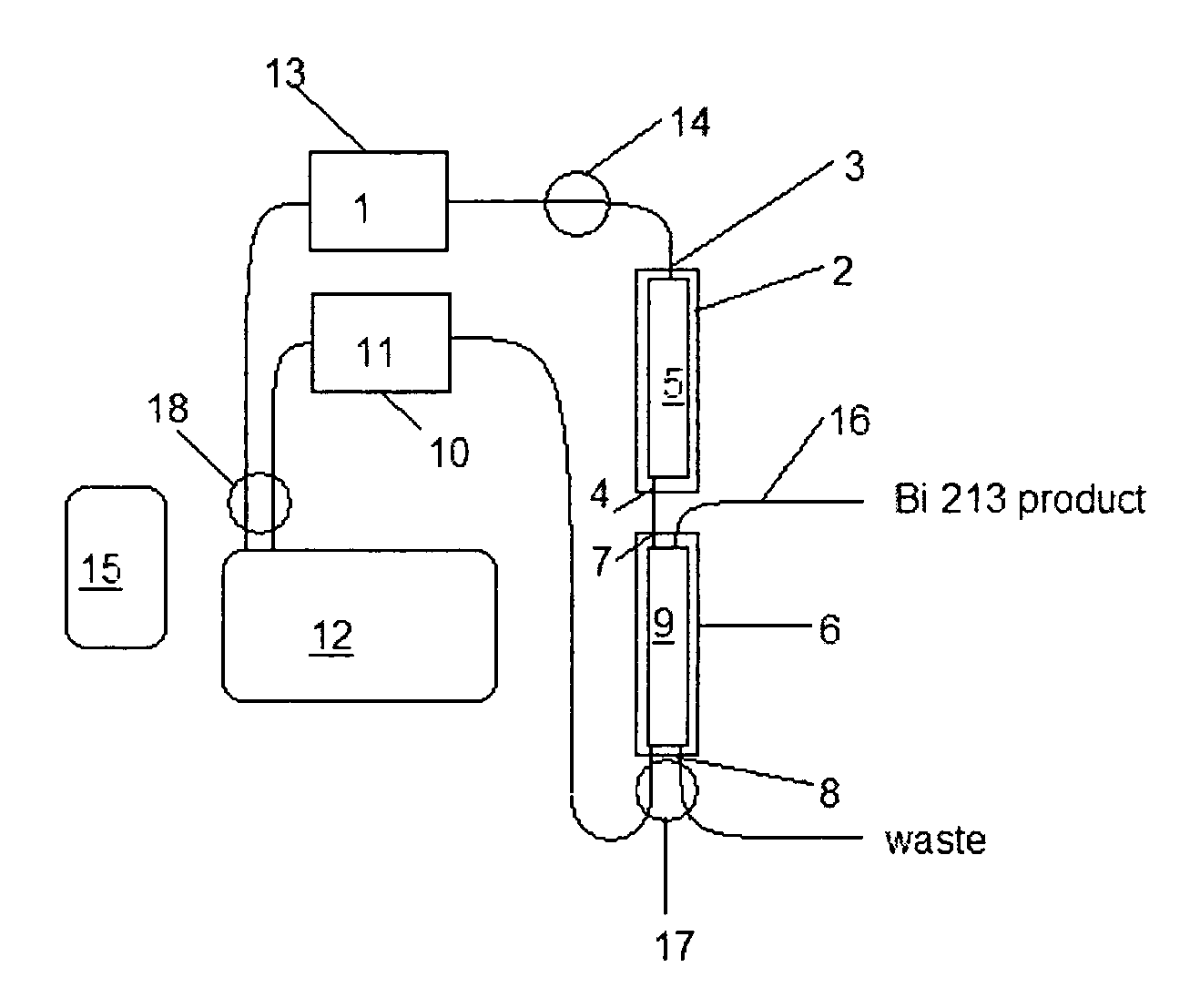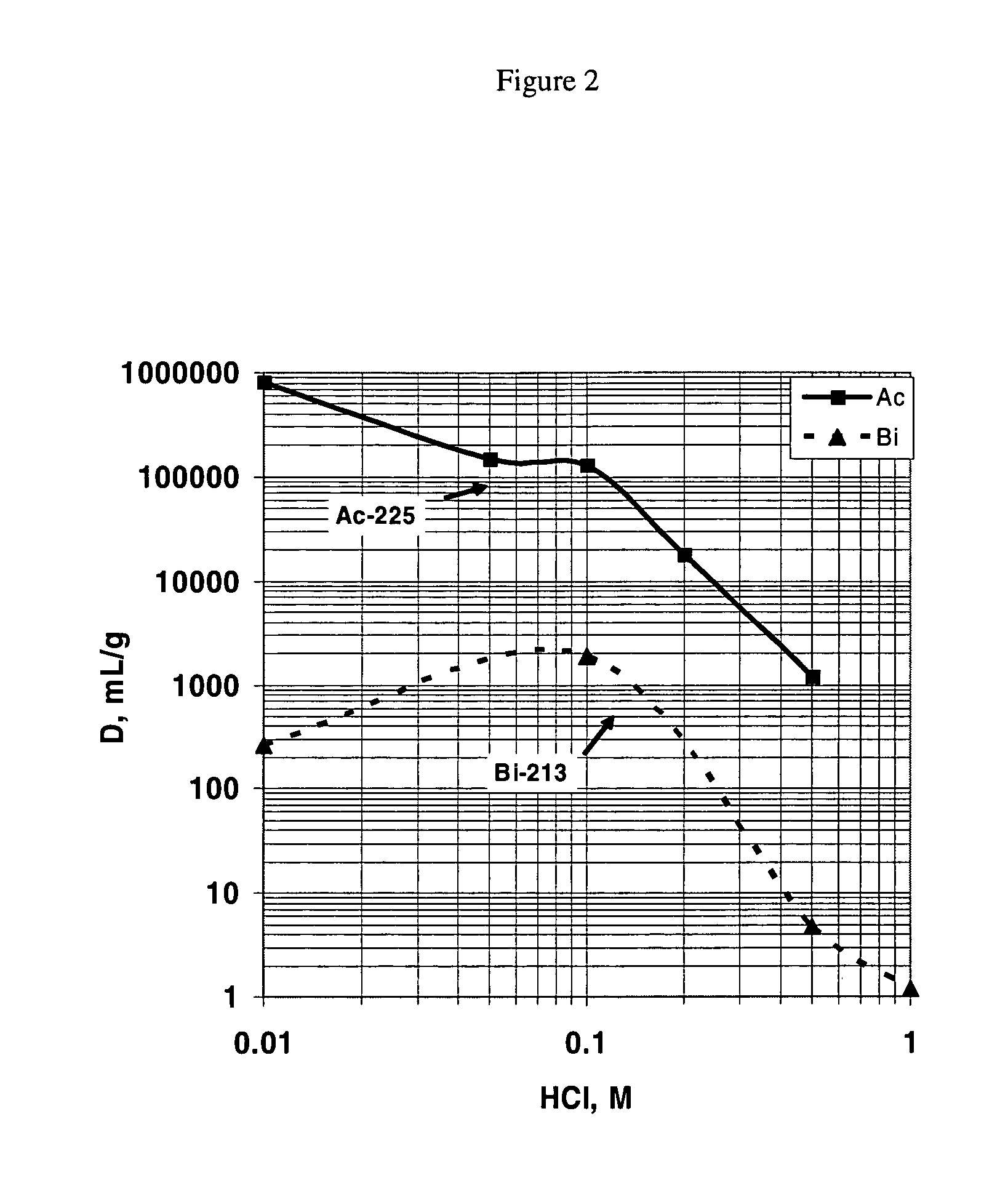Method and apparatus for production of 213Bi from a high activity 225Ac source
- Summary
- Abstract
- Description
- Claims
- Application Information
AI Technical Summary
Benefits of technology
Problems solved by technology
Method used
Image
Examples
Embodiment Construction
[0030]A variety of experiments were undertaken to demonstrate various combinations of materials suitable for use as the compatible solvent and for use as primary and secondary sorbents. In addition to finding a secondary sorbent suitable for use with a compatible solvent, the ability of the secondary sorbent to elute 213Bi with an elutant that would be acceptable for use as a solution in which the 213Bi could be successfully combined with therapeutic biomolecules was also a consideration. While these experiments show various combinations that achieve the objectives of the present invention, they should in no way be viewed as limiting the scope of the present invention. As described in the forgoing Summary of the Invention, a wide variety of materials are capable of being effectively utilized in the present invention. Accordingly, the experiments described below should only be considered as illustrative examples of the present invention, and the scope of the claims that follow should...
PUM
| Property | Measurement | Unit |
|---|---|---|
| molar concentration | aaaaa | aaaaa |
| molar concentration | aaaaa | aaaaa |
| bed volume | aaaaa | aaaaa |
Abstract
Description
Claims
Application Information
 Login to View More
Login to View More - R&D
- Intellectual Property
- Life Sciences
- Materials
- Tech Scout
- Unparalleled Data Quality
- Higher Quality Content
- 60% Fewer Hallucinations
Browse by: Latest US Patents, China's latest patents, Technical Efficacy Thesaurus, Application Domain, Technology Topic, Popular Technical Reports.
© 2025 PatSnap. All rights reserved.Legal|Privacy policy|Modern Slavery Act Transparency Statement|Sitemap|About US| Contact US: help@patsnap.com



